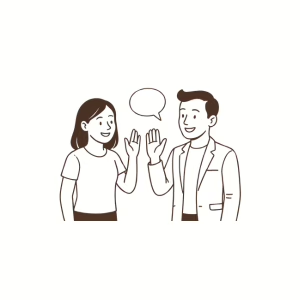If you’ve ever watched an Italian movie, flirted in Venice, or just wanted to sound effortlessly cool, you’ve probably said ciao. And why not? It rolls off the tongue, it’s got flair, and most importantly — it works both ways. Hello and goodbye? Two birds, one stylish stone.
But hold up. Before you throw ciao around like Parmesan on pasta, let’s get one thing clear: ciao is a social chameleon — but even chameleons have their limits.
The Charm of “Ciao”
Let’s start with why ciao is so beloved:
- It’s easy. Just four letters. No conjugations. No gender. No mental gymnastics.
- It’s versatile. Morning, noon, or night — ciao fits in anywhere.
- It’s casual cool. Native speakers drop ciao like a wink. It’s warm, friendly, and no-fuss.
So yes, if you’re traveling to Italy or making Italian friends, ciao is your entry ticket into the vibe. Say it when you walk into a café. Say it when you leave a party. Say it when texting your new Italian crush.
But here’s the twist…
When “Ciao” Isn’t Enough
1. Formality Matters
You wouldn’t walk into a job interview and say “Yo” (well, not unless you’re interviewing at a skateboard startup). Same goes for ciao. It’s informal. Reserved for friends, peers, or people you’re already on a casual level with.
Use instead:
- Buongiorno (Good morning)
- Buonasera (Good evening)
- Arrivederci (Goodbye, formal)
- Salve (Neutral hello – a secret weapon most learners forget)
2. Cultural Borders
Ciao has become globally popular — so much so that you’ll hear it in places like Brazil, Germany, or even Finland. But beware of assuming it always works the same way. In some countries, it can sound flirty, fake, or just plain awkward.
3. First Impressions
In business, with older folks, or in customer service — ciao might come off as immature or disrespectful. Italians are friendly, but they also value good manners. Show some class.
The Evolution of “Ciao”
Fun fact: ciao comes from the Venetian phrase s’ciavo vostro — literally “your slave.” A humble greeting that meant, “I’m at your service.” Over time, the phrase was shortened and transformed into the laid-back ciao we know today.
So yeah. It started as a deeply respectful, even self-effacing word. Ironic, right?
So… Should You Use It?
Yes — but with awareness.
- With friends? Absolutely.
- With strangers? Depends.
- In a job interview? Don’t even think about it.
- Want to flirt? Ciao bella still works (if you know what you’re doing).
Final Word
“Ciao” is your Swiss army knife — handy, sleek, and impressive… until you try to carve a turkey with it.
It’s cool, but it’s not universal.
Learn when to use it — and more importantly, when to leave it in your pocket.
So next time you say ciao, know what you’re saying — and what you’re not.

Comments